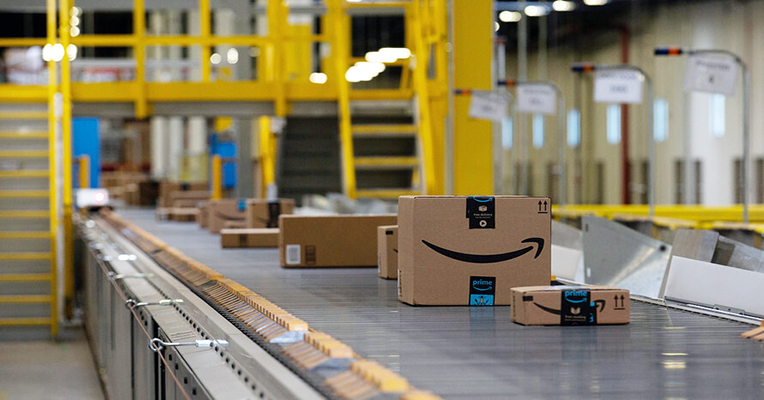Inventory management at Amazon includes all the processes and activities that take place between the time you receive inventory and the time it is sold to the end customer. This is quite a painstaking task! But to make it clearer for you, we will tell you how to manage Amazon inventory and optimize this process in 2022 as much as possible.
Why it’s important to manage Amazon inventory in 2022?
First, you need to understand that the key to success at Amazon is inventory management. Amazon offers you a wide audience to sell to, but it’s pretty easy to trip and fall if you don’t use the right tools.
Small changes in inventory management can have a big impact on your bottom line, for better or for worse. With proper inventory management, you can increase sales. On the other hand, missed opportunities can mean loss of income.
Amazon inventory: What it is?
Inventory is the stock of products that you own and plan to sell through your business.
Inventory management is the process of tracking and storing goods to meet customer demand quickly and efficiently. This refers to how you receive, store and process products to prepare them for sale.
Inventory is an investment. The results of poor inventory management may not show up for several weeks or months. When they become apparent, it can be horrendous: spoiled products, dead inventory, high storage costs, or worse, depleted inventory and backordered customers.
In addition, storage fees and storage costs can reduce your profitability.
Amazon stats for everything related to inventory
How many warehouses does Amazon have?
Worldwide, Amazon operates more than 175 fulfillment centers spanning over 150 million square feet.
How much shelf space is allocated to third-party vendors in warehouses?
Amazon’s roughly 800,000-square-foot sorting fulfillment centers can employ more than 1,500 full-time employees.
From 600,000 to 1 million square feet, Amazon’s unsorted fulfillment centers employ more than 1,000 full-time employees.
Many centers cover the equivalent of 28 football fields and can store tens of millions of items on any given day.
What Amazon solutions do sellers need to manage inventory and organize inventory?
Amazon inventory management systems are specialized software that can be used to track your inventory levels, shipments, sales, and orders coming from your Amazon sales channels.
What is it for? To reduce storage costs, reduce transaction fees, and keep inventory in sync across all your listings. This results in less hassle and allows you to strike a better and more accurate balance between too much stock and too little.
Proper inventory management is also an important part of Amazon product lifecycle management; with proper inventory management, you can make the right choice regarding prices and stock levels for each product.
What is the easiest way to manage Amazon inventory in 2022?
Also, use third party inventory management services. For example, Fulfillment by Amazon (FBA) allows you to automate aspects of inventory management such as demand planning, maintaining normal inventory levels, and preventing inventory obsolescence or deterioration.
Third party vendors can also manage inventory at scale, helping you save on costs such as order fulfillment and offering fast shipping.

Amazon’s inventory management systems become even more important if you’re selling using Fulfillment by Amazon (FBA) or FBA onsite. Amazon FBA gives merchants access to Amazon’s extensive distribution network.
Amazon takes responsibility for shipping your customers’ orders, ensuring they are delivered straight to their door. If you don’t have a fulfillment structure that allows you to offer two-day or one-day shipping, Amazon FBA has support to help you do so.
Using Amazon FBA requires you to have enough inventory at FBA distribution centers to keep up with Amazon’s order management, but not too much for Amazon to charge you late storage fees. This requires a delicate balance. That being said, using inventory management software that can track inventory in your warehouses, including Amazon FBA, makes inventory forecasting and planning easier.
8 tips to help you efficiently manage your Amazon inventory
There are several small but effective steps you can take to streamline your inventory processes. For example, how much product information can you track? In addition to tracking individual items, perhaps you could increase sales by tracking product sizes and weights or barcodes. This kind of data, in turn, can allow you to make the most of empty storage space or avoid having too much inventory in stock.
To drive sales in the right direction and delight customers, follow these basic inventory management tips.
Here are some tips to help you manage your inventory effectively:
- Build and maintain relationships with suppliers
- Track your pass-through sales
- Replenish popular products of your listings more often
- Run promotions to reduce inventory
- Keep track of your margin
- Reduce excess inventory to improve profitability
- Choose the right inventory management system
- Maintain four weeks of inventory coverage
Key takeaways, how to manage inventory on Amazon?
Manually managing your inventory is not only tedious, but also increases the risk of making mistakes.
It’s much easier to work with an inventory system that not only helps you manage inventory, but is built to meet the specific needs and requirements of the channels you sell through.
The key is to find an automated inventory management solution that suits you and your needs.
If you’re planning to grow your business and expand into new markets, be sure to find one that provides sales channel support so you can sell on Amazon and beyond.
0



